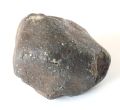Cenote - http://pl.wikipedia.org/wiki/Cenote
właśnie leci program na kanale History, gdzie mowa o badaniach archeologicznych na terenach Majów, no i usłyszałem dziwną dla mnie informację, iż te naturalne systemy studni i jaskiń krasowych zawdzięczamy spadkowi meteoroidu, który spadł na Jukatanie i wytrzebił dinozaury
Cenote a spadek wielkiego meteoroidu
Astronomia i muzyka
I tego trzymać się trzeba
(E. Stachura, "Prefacja")
I tego trzymać się trzeba
(E. Stachura, "Prefacja")
-

Jacek Drążkowski - meteorytoman
- Posty: 4846
- Dołączył(a): Pn paź 30, 2006 9:32 pm
- Lokalizacja: Lidzbark Warm.
Re: Cenote a spadek wielkiego meteoroidu
a powiedzieli w jaki sposob spadek utworzyl te jaskinie ?
-

tribal216 - meteorytoman
- Posty: 1649
- Dołączył(a): N wrz 06, 2009 2:42 pm
- Lokalizacja: Sosnowiec
Re: Cenote a spadek wielkiego meteoroidu
no właśnie tego nie usłyszałem i też mnie to ciekawi 
Astronomia i muzyka
I tego trzymać się trzeba
(E. Stachura, "Prefacja")
I tego trzymać się trzeba
(E. Stachura, "Prefacja")
-

Jacek Drążkowski - meteorytoman
- Posty: 4846
- Dołączył(a): Pn paź 30, 2006 9:32 pm
- Lokalizacja: Lidzbark Warm.
Re: Cenote a spadek wielkiego meteoroidu
cytuje za wikipedia
"In their 1991 paper, Hildebrand, Penfield, and company described the geology and composition of the impact feature.[31] The rocks above the impact feature are layers of marl and limestone reaching to almost 1,000 m (3,300 ft) in depth. These rocks date back as far as the Paleocene.[32] Below these layers lie more than 500 m (1,600 ft) of andesite glass and breccia. These andesitic igneous rocks were found only within the supposed impact feature; similarly, quantities of feldspar and augite, normally only found in impact-melt rocks, are present,[33] as is shocked quartz.[32] The K?T boundary inside the feature is depressed between 600 to 1,100 m (2,000 to 3,600 ft) compared to the normal depth of about 500 m (1,600 ft) depth 5 kilometres (3.1 mi) away from the impact feature.[34] Along the edge of the crater are clusters of cenotes or sinkholes, which suggest that there was a water basin inside the feature during the Tertiary period, after the impact.[34] Such a basin's groundwater dissolved the limestone and created the caves and cenotes beneath the surface.[35] The paper also noted that the crater seemed to be a good candidate source for the tektites reported at Haiti.[36]" podane przez nich zrodlo tego zdania - Kring, "Discovering the Crater".
"In their 1991 paper, Hildebrand, Penfield, and company described the geology and composition of the impact feature.[31] The rocks above the impact feature are layers of marl and limestone reaching to almost 1,000 m (3,300 ft) in depth. These rocks date back as far as the Paleocene.[32] Below these layers lie more than 500 m (1,600 ft) of andesite glass and breccia. These andesitic igneous rocks were found only within the supposed impact feature; similarly, quantities of feldspar and augite, normally only found in impact-melt rocks, are present,[33] as is shocked quartz.[32] The K?T boundary inside the feature is depressed between 600 to 1,100 m (2,000 to 3,600 ft) compared to the normal depth of about 500 m (1,600 ft) depth 5 kilometres (3.1 mi) away from the impact feature.[34] Along the edge of the crater are clusters of cenotes or sinkholes, which suggest that there was a water basin inside the feature during the Tertiary period, after the impact.[34] Such a basin's groundwater dissolved the limestone and created the caves and cenotes beneath the surface.[35] The paper also noted that the crater seemed to be a good candidate source for the tektites reported at Haiti.[36]" podane przez nich zrodlo tego zdania - Kring, "Discovering the Crater".
-

tribal216 - meteorytoman
- Posty: 1649
- Dołączył(a): N wrz 06, 2009 2:42 pm
- Lokalizacja: Sosnowiec

